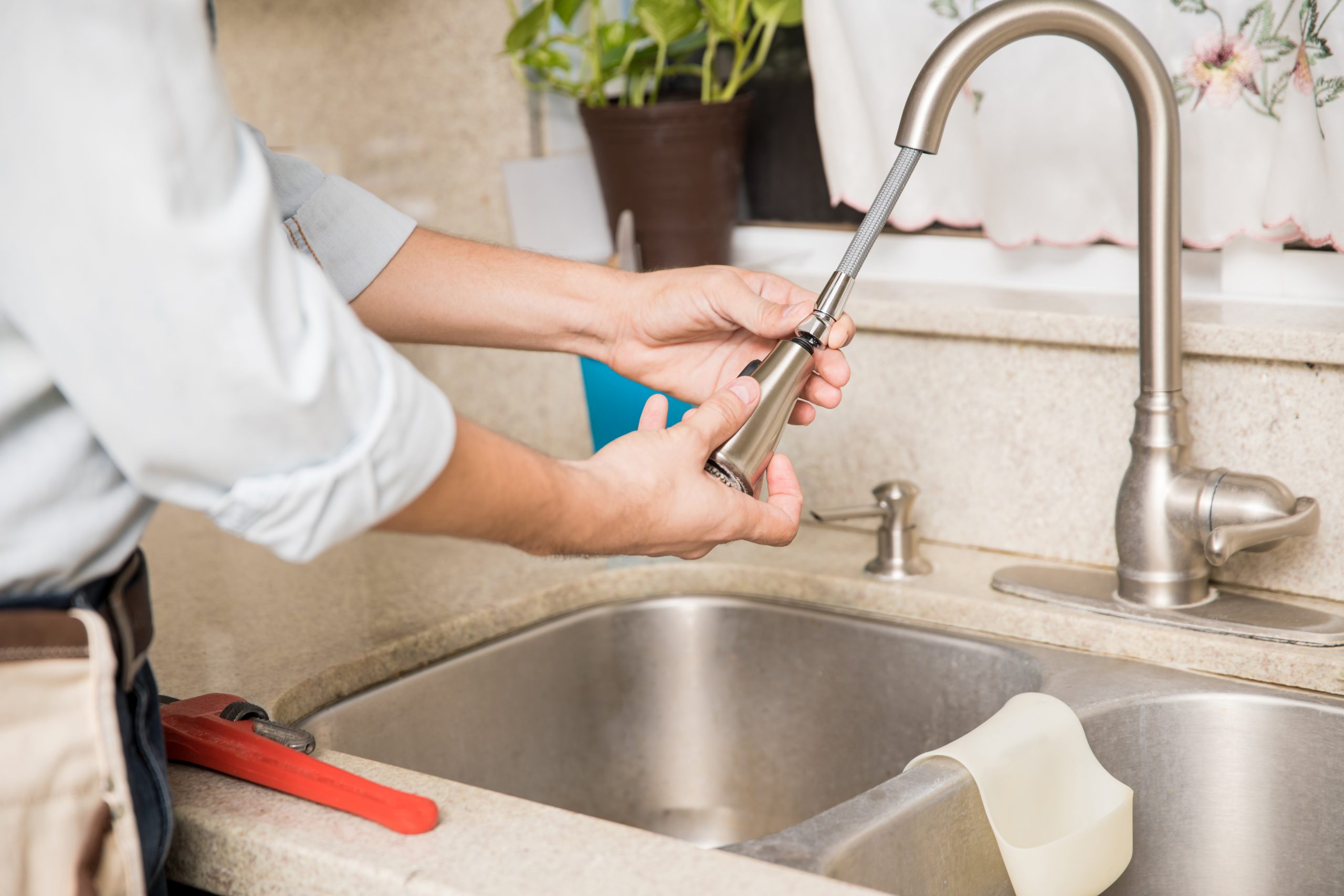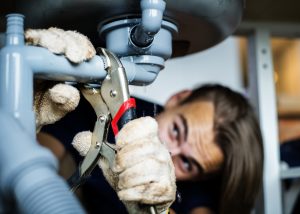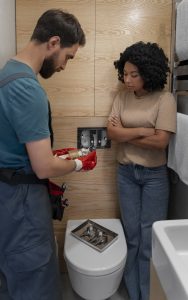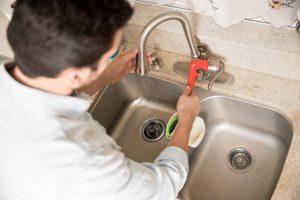When it comes to preventing leaks in your plumbing system, a small roll of white tape can make the difference between a watertight seal and a slow, frustrating drip. That simple material, plumber’s tape, also called PTFE tape or Teflon tape, is one of the most underrated essentials in plumbing.
Most homeowners see professionals use it, but few really understand why or how it works. Used incorrectly, it can fail completely. Used properly, it forms an invisible seal that keeps your water, gas, or heating system running safely and efficiently for years.
This guide, prepared with insights from professional engineers at EPG247, explains everything you need to know about plumber’s tape, from what it’s made of and how to use it correctly, to the common mistakes to avoid and safety rules for gas fittings.
What Exactly Is Plumber’s Tape?
Plumber’s tape is a thin, flexible, white strip made from polytetrafluoroethylene (PTFE), a synthetic material that’s extremely durable, non-reactive, and resistant to heat and chemicals.
In plumbing, it’s wrapped around threaded pipe joints to seal the connection and prevent water or gas from leaking out through the spiral gaps in the threads.
When you screw two threaded parts together, for example, a tap connector and a pipe nipple, there are microscopic spaces between the metal ridges. Water or gas can easily escape through those spaces if left unsealed. PTFE tape fills those tiny gaps, creating a secure, watertight seal.
It also acts as a lubricant, reducing friction between metal parts and preventing them from seizing over time. That’s why fittings wrapped with plumber’s tape are easier to unscrew later without damaging the threads.
In short, plumber’s tape is both a sealant and a protector, a tiny strip that keeps your joints leak-free and extends the lifespan of your plumbing connections.
Types of Plumber’s Tape and When to Use Each
Although all plumber’s tapes look similar, they’re not identical. The colour and thickness determine where and how they should be used. Using the wrong type can lead to leaks or even unsafe installations.
1. Standard White PTFE Tape
This is the most common type you’ll find in hardware stores. It’s made for water systems, both hot and cold, and is ideal for sealing threaded joints in taps, showers, and radiator fittings.
It’s thin and easy to tear, making it convenient for household plumbing repairs.
2. Gas-Rated Yellow Tape
For gas pipelines, a stronger, thicker tape is required. Yellow PTFE tape is specifically designed for natural gas and LPG (propane). It can withstand higher pressure and chemical exposure without degrading.
Gas tape is tested to strict safety standards and resists temperatures far higher than ordinary tape.
3. Pink or Grey Heavy-Duty Tape
Some professional plumbers use pink or grey PTFE tape for heavy-duty or high-pressure water systems, such as industrial boilers, heating systems, or commercial applications.
4. Green Oxygen Tape
A specialist variant used in hospitals or laboratories. Not relevant for domestic plumbing, but good to know if you ever see it mentioned.
How Plumber’s Tape Works
Threaded joints depend on precise alignment between male and female threads. However, even well-cut threads aren’t perfect, they have tiny surface irregularities that let fluid pass.
When you wrap plumber’s tape around the male thread, it:
- Fills the micro-gaps between the threads.
- Creates frictional grip, ensuring the joint tightens smoothly.
- Acts as a compressible barrier, sealing when the joint is screwed tight.
- Prevents corrosion, because it isolates metal parts from direct contact.
That’s why plumber’s tape isn’t just optional, it’s a necessity for any threaded connection where leakage could occur.
Step-by-Step Guide to Using Plumber’s Tape Correctly
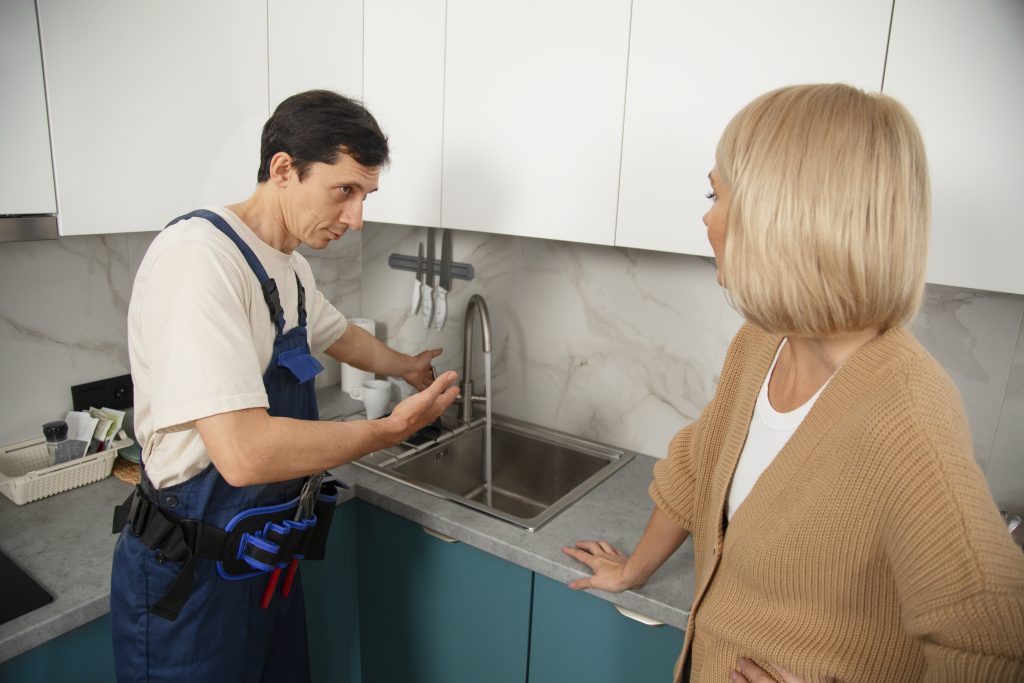
The success of plumber’s tape depends entirely on how it’s applied. Too little, too much, or wrapping it the wrong way can all cause leaks. Follow these steps carefully for a perfect seal:
Step 1: Prepare the Threads
Start by cleaning the male threads with a dry cloth or small brush. Remove rust, debris, or remnants of old tape. Threads must be clean and dry before wrapping, moisture weakens the grip.
Step 2: Hold the Tape Correctly
Hold the tape roll so that it unrolls clockwise when you’re facing the open end of the pipe. This ensures that the tape will tighten in the same direction as the fitting when screwed together.
Step 3: Begin Wrapping
Place the tape’s starting edge about 2 mm back from the end of the thread. This prevents pieces from entering the pipe once the water runs.
Wrap clockwise around the threads, pulling the tape firmly but not so tightly that it stretches thin. Overlap each pass by about half the tape’s width to cover all grooves evenly.
Step 4: Build Layers
For normal household fittings, 3 – 5 wraps are usually enough.
For larger or worn metal threads, use 6 – 8 wraps.
For gas connections, many professionals use up to 10 wraps for maximum pressure resistance.
The goal is to create a smooth, even layer that follows the shape of the thread, not a bulky lump.
Step 5: Press the Tape In
Once wrapped, press the tape gently into the threads with your thumb. This helps it seat properly and prevents unraveling.
Step 6: Assemble the Joint
Screw the female fitting onto the taped male thread by hand first, then finish with a wrench. Tighten just enough to feel firm resistance.
Over-tightening can slice the tape and actually cause leaks later.
Step 7: Test the Seal
After assembly, turn the water or gas back on slowly and check for leaks. If you see moisture or hear hissing, turn it off, undo the fitting, remove the old tape completely, and reapply fresh layers.
When (and When Not) to Use Plumber’s Tape
It’s a common misconception that plumber’s tape works everywhere. In reality, it should only be used on threaded joints.
Use plumber’s tape for:
- Metal-to-metal threads (for example, tap connectors, radiator valves).
- Metal-to-plastic threaded joints.
- Shower arms, boiler fittings, and appliance connections.
Don’t use it for:
- Compression fittings (which seal via an olive ring).
- Push-fit or quick-connect fittings.
- Flat-faced joints sealed with rubber washers or gaskets.
If your fitting isn’t threaded, plumber’s tape will do nothing, and can even interfere with proper sealing.
Common Mistakes to Avoid
Even experienced DIYers sometimes make errors when using plumber’s tape. Here are the pitfalls that cause most leaks:
- Wrapping the wrong way:
Always wrap clockwise. If you wrap counter-clockwise, the tape unwinds when you tighten the fitting. - Covering the first thread:
Leaving a small gap prevents tape fragments from entering the water line. - Using too much tape:
Overwrapping creates excess thickness, making the fitting hard to tighten and risking thread damage. - Using too little tape:
Two or fewer wraps may not create enough compression to stop leaks. - Mixing tapes:
Never use water tape on gas lines or vice versa. Each has different density and chemical resistance. - Over-tightening fittings:
This can cut through the tape or deform the threads. Stop once you feel a solid seal. - Re-taping over old layers:
Always remove old tape completely before reapplying. Stacked layers don’t bond well and can leak under pressure.
Gas Applications: Safety and Standards
Using plumber’s tape on gas fittings requires extra caution.
For natural gas or LPG, you must use yellow gas-rated PTFE tape that complies with BS EN 751-3 (the British safety standard).
Gas tape is thicker, denser, and designed to resist hydrocarbons and pressure fluctuations. Ordinary white tape will degrade over time and can allow gas to escape, a serious hazard.
Although anyone can technically buy gas tape, UK law requires that only Gas Safe-registered engineers install, modify, or service gas connections.
If you ever smell gas, hear a hiss, or suspect a leak, don’t attempt a repair yourself. Turn off the supply, open windows, and call a professional immediately.
Safety first: Gas leaks are invisible and odourless once odorant fades, never take chances.
Professional Tips for Perfect Tape Use
These are the small habits that make a big difference, drawn from the real-world experience of seasoned UK plumbers.
- Keep the tape flat: Twisted tape leaves gaps.
- Apply steady tension: Too loose and it slips; too tight and it tears.
- Use quality brands: Cheap tape often shreds and doesn’t seal properly.
- Store in a dry place: Moisture ruins the adhesive properties.
- Avoid contamination: Keep dust and grease off the tape roll.
- Replace old tape rolls annually: PTFE can age and lose elasticity.
A few extra seconds spent wrapping correctly can save hours of frustration later.
Understanding How Many Wraps You Need
Many people ask how much tape is too much. There’s no fixed rule, but professional plumbers follow a simple logic:
- Small plastic fittings → 3–4 wraps
- Medium metal joints → 5–6 wraps
- High-pressure or gas systems → 8–10 wraps
If the fitting goes on too easily, you probably need another wrap or two.
If it’s almost impossible to start, you’ve gone too far.
Think of it like seasoning food, a little balance goes a long way.
Maintenance and Longevity
Once installed, plumber’s tape doesn’t require maintenance. It remains effective for years as long as the joint isn’t disturbed.
However, you should reapply new tape whenever:
- You disconnect or replace a fitting.
- You notice even a small drip or dampness around threads.
- The joint is being re-tightened after years of use.
Never attempt to patch over old tape. Always remove the entire fitting, clean the threads, and start fresh.
For older metal systems with corrosion, it’s wise to inspect annually. Over time, vibration or temperature changes can loosen threads slightly, and new tape may be necessary.
PTFE Tape vs Other Sealants
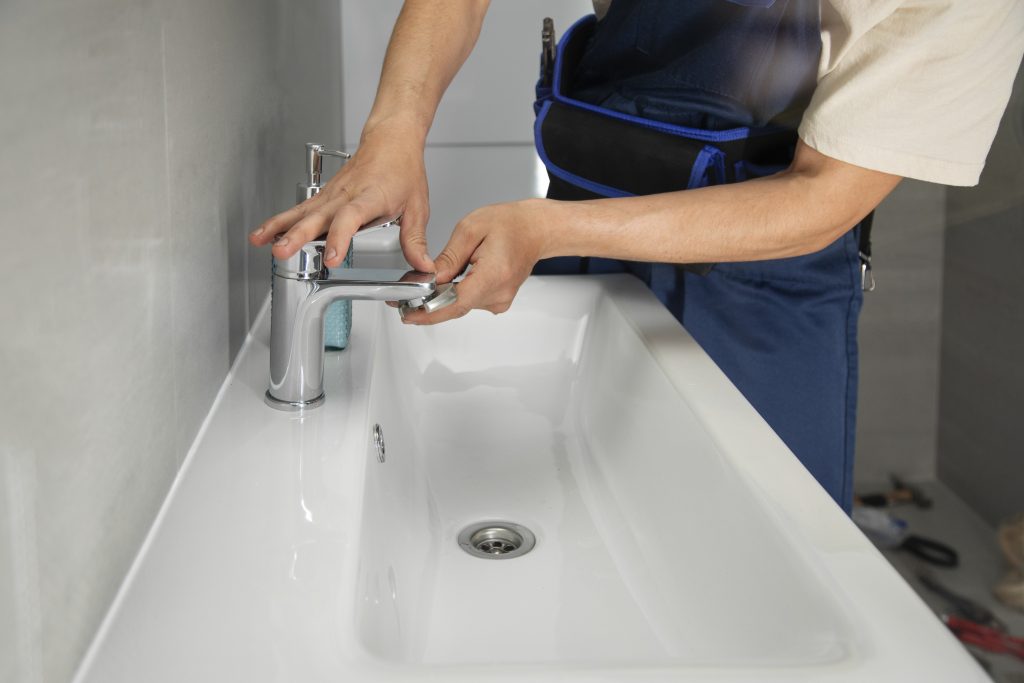
Some modern plumbers use liquid sealants or thread pastes instead of PTFE tape. Both have their place.
Liquid sealants can handle extreme temperatures and can be used on larger industrial systems.
However, they require curing time and can make future disassembly harder.
PTFE tape, by contrast, is clean, instant, and easy to remove later, making it the go-to choice for domestic plumbing.
In short:
- Use PTFE tape for convenience and quick sealing.
- Use liquid sealant only for specialized or high-pressure installations.
Conclusion:
Using Plumber’s Tape the Right Way for Long-Lasting Results
Plumber’s tape might look simple, but it’s an essential part of every reliable plumbing system.
Using it correctly means fewer leaks, smoother installations, and safer connections for both water and gas.
The key is patience and precision: wrap it in the right direction, use the correct number of layers, and always choose the appropriate tape for your application.
Whether you’re fixing a small leak under your sink or connecting new heating pipes, the right use of plumber’s tape ensures a professional-level result that lasts for years.
This educational guide was prepared with the help of plumbing experts from EPG247 to help UK homeowners understand and apply plumber’s tape safely and effectively.
Frequently Asked Questions
What does PTFE stand for?
Polytetrafluoroethylene — a synthetic polymer known for its slippery, non-stick surface and chemical resistance.
Can I use plumber’s tape on plastic threads?
Yes, but wrap lightly. Plastic threads are softer and can deform easily.
How can I tell if I’ve wrapped enough?
The tape should completely cover the threads without overlapping onto the pipe body. The joint should tighten smoothly but firmly.
Is Teflon tape safe for drinking water?
Yes. PTFE tape is chemically inert and non-toxic, making it safe for potable water systems.
What happens if I use the wrong type of tape?
For water lines, the worst outcome is a slow leak. For gas lines, it could be dangerous. Always match the tape type to the application.
Do I need to apply tape on compression fittings?
No. Compression fittings seal with a brass olive, not thread friction.
Can plumber’s tape stop an existing leak?
No. It prevents leaks but doesn’t repair them. If a joint leaks, dismantle, clean, and re-tape.
Can I reuse old tape if the joint was never pressurised?
It’s not recommended. Once wrapped and compressed, PTFE loses its elasticity. Always use new tape for reliability.

